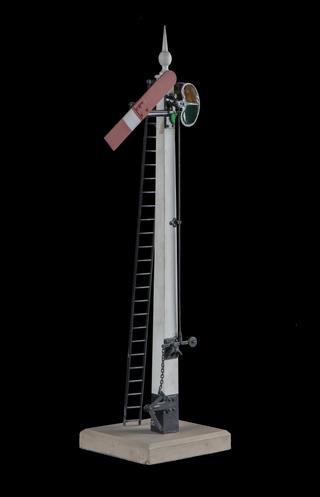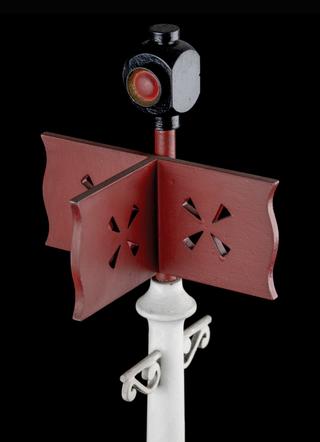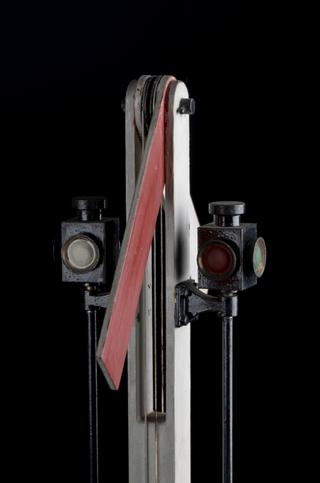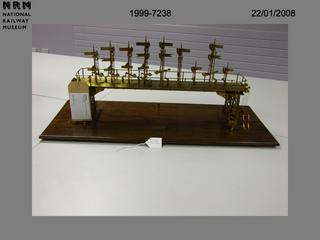
Model of Brunel's Disc and Crossbar Signal
- Made:
- c.1912 in Science Museum
- maker:
- Science Museum




Model signal, scale 1:16, Great Western Railway, Brunel's Disc and Crossbar signal, 1841, made c.1912.
Introduced by engineer Isambard Brunel in 1841, the ‘disc and crossbar’ signal provided a standard form of signalling on the Great Western Railway (GWR) and associated companies. The disc – which indicated that the line ahead was clear – was located at the top of a signal post and was set at right-angles above the crossbar – which indicated that a train must stop. It was an early attempt at providing a positive indication of safety. The signal fitting could be rotated by a railway policeman operating a lever at its base, and lamps indicated the aspect at night.
To assist with time-interval signalling, additional ‘fantail’ signals – arrow-shaped boards – were used in conjunction with the disc and crossbar signals. Set at a lower height, when a red-coloured fantail was shown for a set period, it indicated stop, while a green fantail indicated caution. If the fantail was turned parallel to the running line, it meant line clear. These signals were gradually replaced by semaphores from 1865.
Born in 1806, Brunel was a prolific engineer whose outputs ranged from the GWR between Bristol and London and other railways, to ships including the SS Great Britain, docks, and bridges. Less successful were his locomotive designs, while his concept of a ‘broad gauge’ railway ran against the grain of the many railways adopting ‘Stephenson Gauge’ at the same time. He died in 1859.
Details
- Category:
- Railway Models
- Object Number:
- 1912-59
- Materials:
- metal (unknown), wood (unidentified) and paint
- Measurements:
-
overall: 370 mm x 100 mm x 100 mm,
- type:
- model




